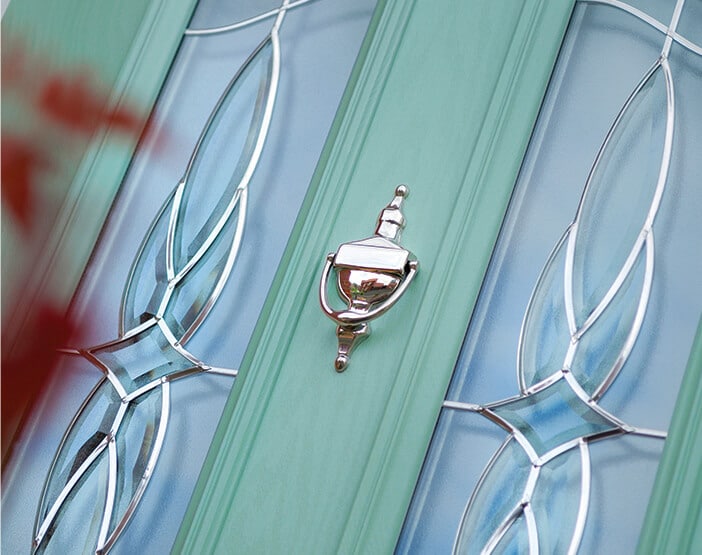Composite Front Doors Burham
Professional Composite Front Installers
Transform The Entrance To Your Home With One Of Kentish Door’s Composite Front Doors
Kentish Doors are highly skilled Composite Front Doors installers based in Kent. We have an incredible range of entrance door colours, styles and features to enable you to create the perfect door for your home. Our doors are made to last, combining strong, state of the art energy efficient materials which reduce drafts, outside noise and also increase your thermal efficiency. All doors come with complex security systems, providing your home with added security which can lead to lower home insurance costs. Our doors are made and fitted to the highest standards. Using our free online composite door designer tool, you can design your door yourself. If you would like assistance creating the door, or have some questions we are happy to help you. To provide you with a quote we would require a site visit to ensure all measurements are correct before fabrication of the door begins. To arrange a free measure and quote please call us today on 01634 321202 or message us via our online contact form.


Choose your door from our gallery & design your perfect door online
Click below to design your perfect door online. Choose from hundreds of options to design your door in minutes.

Suited Hardware & Furniture
We offer a stunning range of suited furniture to match any home, from traditional hardware to contemporary stainless steel options.

13 Stunning Door Colours
Availble internal and external, we have colours to suit any home, be it traditional, contemporary or modern. We have something for everyone.

Locking and security
You can have any locking system with any furniture suite – so it’s even easier to get the lock and security you need with the furniture you want.

Glass and Glazing options
Our unique and patented glazing cassette can be removed from the inside to let you simply change the glass and reuse the cassette.
Burham is a village and civil parish in the borough of Tonbridge and Malling in Kent, England. According to the 2001 census it had a population of 1,251, decreasing to 1,195 at the 2011 Census. The village is near the Medway towns.
The history of Burham can be traced to Roman times. AD43 saw the Battle of the Medway at the crossing point on the River Medway, where Burham is now, when the invading Roman legions, advancing west across Kent, were confronted by a massed army of the ancient British tribes. The Roman victory altered the course of history in Britain, and the remains of Roman buildings have been found in Burham and the neighbouring village of Eccles.
There has been a Settlement in Burham since Saxon times, “ham” being the Saxon word for “settlement” — the “Bur” part of the name comes from “burgh”, or borough, referring to the borough of Rochester. The name “Burham” means “the village near the borough”.
In the 11th century Burham belonged to Leofwine Godwinson, brother of King Harold. He was killed along with his brother at the Battle of Hastings in 1066. It is listed as having six sulings (about 240 acres) of land. There were two major farms, 15 “villeins” each farming 30 acres (120,000 m) and 20 “borderers” each farming about 5 acres (20,000 m). There was a church and a mill with woodland sufficient to support 20 hogs. The medieval church of St Mary is now redundant and stands on the riverbank. It is now cared for by the Churches Conservation Trust having been saved from dereliction by the Friends of Friendless Churches in the 1950s.
About 1830 Burham became a “cement village” on the Medway, after the discovery of the manufacturing technique for Portland cement (so called because of its resemblance to Portland stone).
By 1841 the village’s population had grown to 380 and increased to a maximum of 1,725 in 1901. Today it is about 1,300.
On the 26 July 1998, the air ambulance, a Eurocopter AS355 Twin Squirrel, registration G-MASK, crashed in good weather after colliding with power cables near Burham while returning to Rochester Airport following an aborted call to attend a road accident. All three crew – the pilot, Graham Budden, and two paramedics, Tony Richardson and Mark Darby – were killed as the helicopter burst into flames on impact.
Initial investigation established no cause for the crash, due to the fireball produced on impact. Initially the pilot’s employers, Police Aviation Services, denied liability. On 19 February 2004, following a civil case brought by the pilot’s widow to the High Court in Manchester, it was ruled that the crash was caused by mechanical failure not, as had been suggested, flying low for fun, and ordered compensation to be paid.
A memorial to the crew is located at the Blue Bell Hill picnic site, close to the scene of the crash.
